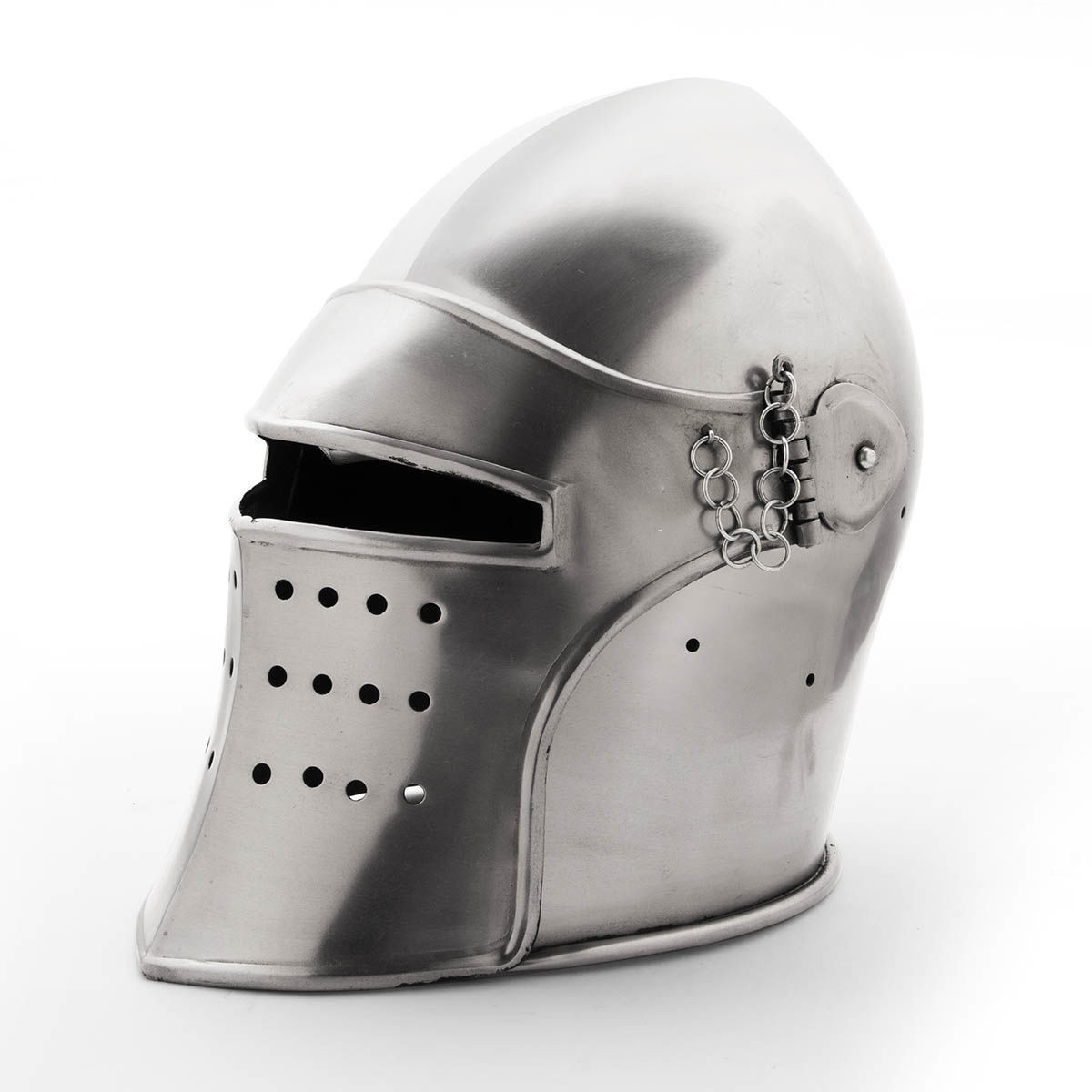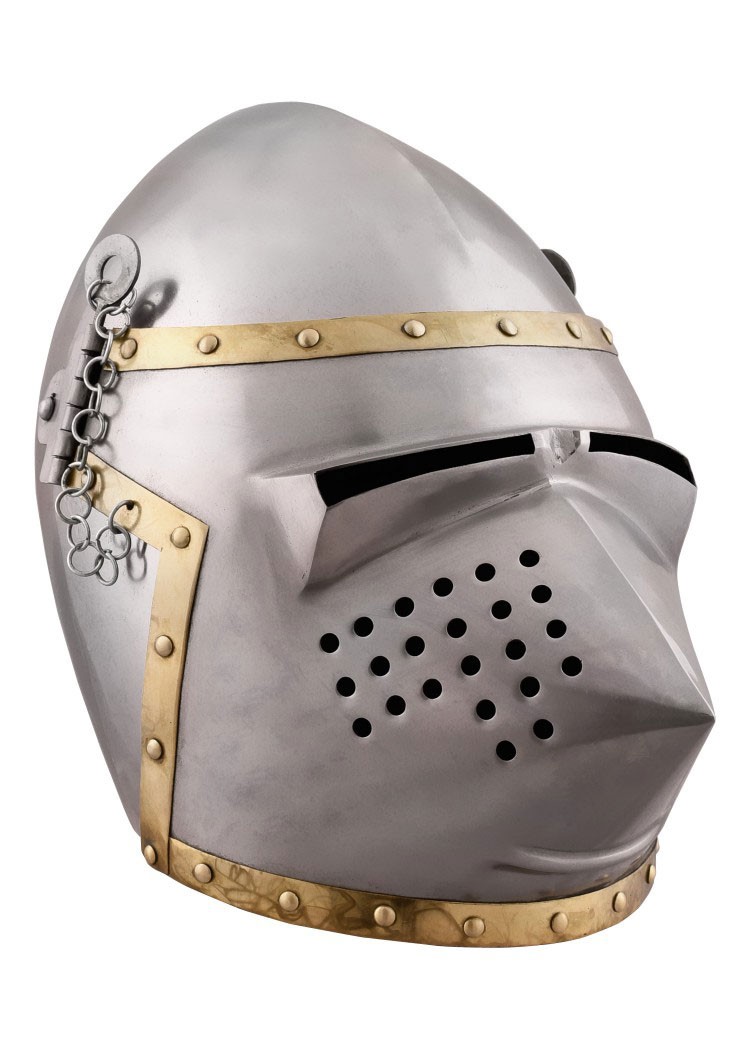Shopping Cart
There are no more items in your cart
What is a Bascinet?
The bascinet is one of the most emblematic helmets of the Middle Ages, extensively used by knights and soldiers from the late 13th century until the first third of the 15th century. This helmet not only offered protection but also reflected the strategic and technological evolution of the era.Origin and Characteristics of the Bascinet
The term "bascinet" comes from the Latin *bacinetum*. Some believe its name is related to its resemblance to a basin or container. This helmet emerged as a revolutionary option against the heavy helms of the time, providing lighter and more practical protection for the medieval warrior.- Initial Design: The bascinet had a hemispherical shape covering the head, ears, and neck, offering protection without sacrificing mobility.
- Evolution: Over time, some models adopted a pointed design at the top, while the addition of visors improved facial defense.
- Options: It could be found with or without a visor, depending on the historical period and region in which it was used.

The Role of the Bascinet in Combat
Initially, the bascinet was used as an extra layer of protection under the helm, as complete helms were uncomfortable and too heavy for long combat periods. This circumstance motivated soldiers to replace the helm with the bascinet by removing the former.Main Stages of Its Evolution:
1. **Implementation of the Visor:** In the 14th century, to protect the exposed face, movable visors began to be added. These evolved from simple options, such as a "movable trap" around 1310, to more sophisticated designs with a conical shape around 1350. 2. **Structural Improvements:** From 1380, the design of the bascinet expanded its protection to include shoulder support. At this stage, visors adopted a more hemispherical shape instead of a conical one. This final design offered more comfort and defense in combat.
Regional Diversity and Types of Bascinets
The popularity of the bascinet spread throughout Europe, adopting variations according to local needs:- Spain: Here the bascinet usually had an ovoid and pointed shape, with a flat visor. It is celebrated in historical documents like the codex of the Trojan War (14th century).
- Bascinet with Nasal: This older model incorporates an extension to protect the nose and was particularly common in the Iberian Peninsula.
- German Models: Reinforced bascinets known as "embattlement" were developed, widely used by German soldiers.
The Legacy of the Bascinet
The bascinet was not only a protection tool but also marked a significant transition in medieval armor design. Its evolution demonstrates how technological advances and battlefield needs shaped military equipment. With its adaptable design, regional variations, and multiple variants, the bascinet continues to be a subject of study and fascination for those interested in military history and culture.| Period | Design Characteristics | Main Regions |
|---|---|---|
| Late 13th Century | Hemispherical shape, no visor | Western Europe |
| 1350 | Added conical visor | France, England |
| 1380 | Expanded design to the shoulders | Germany, Spain |
















